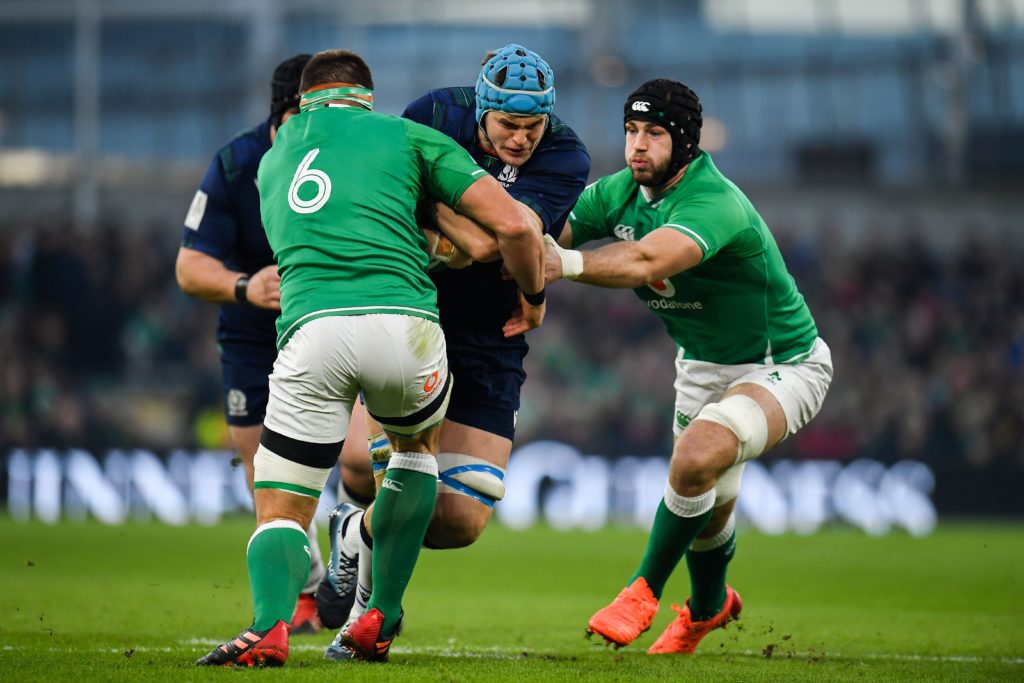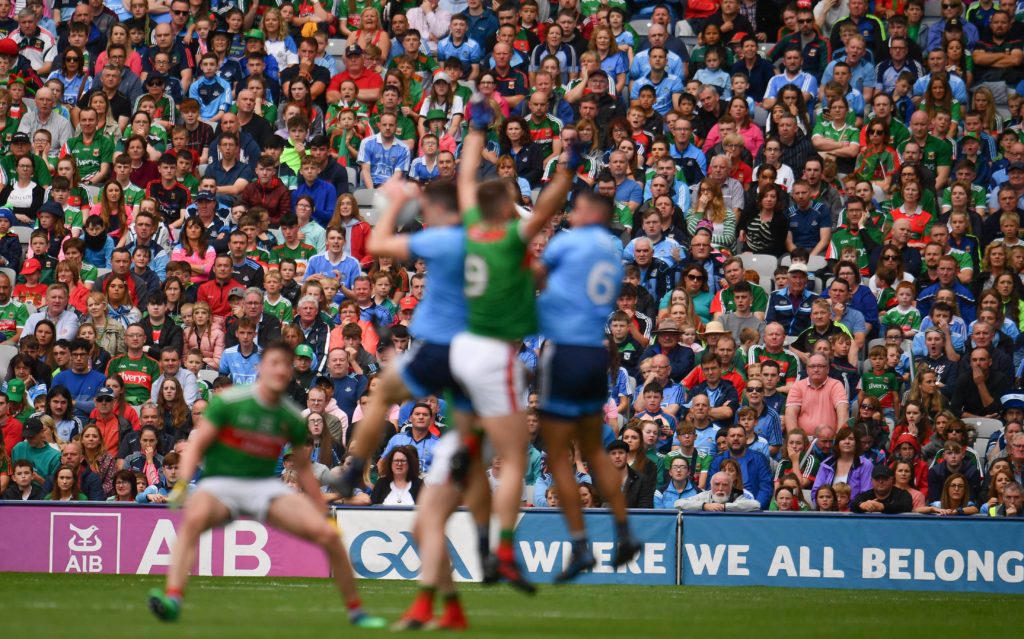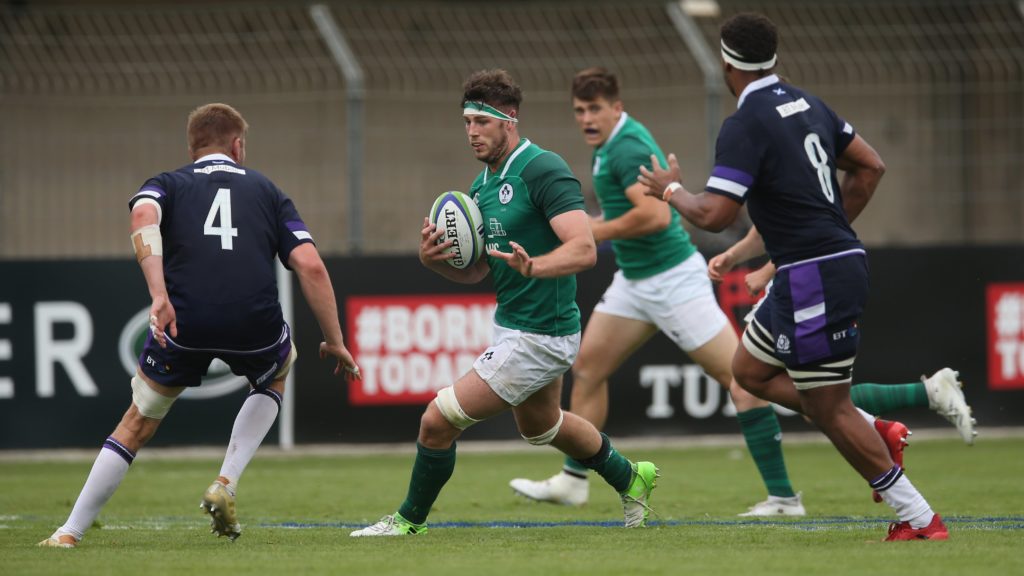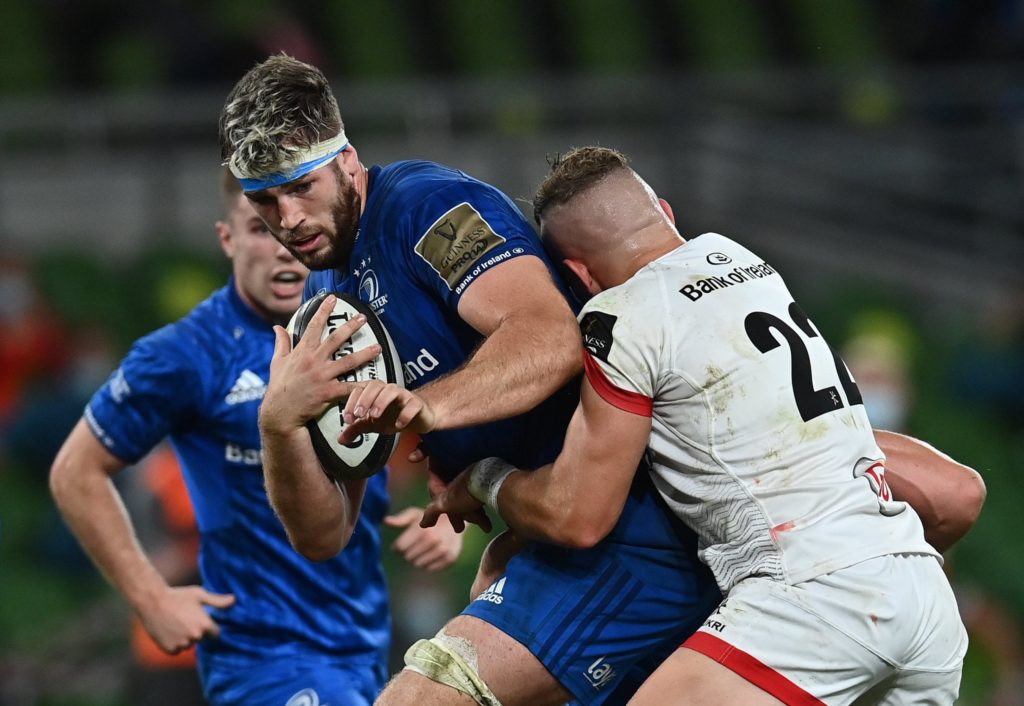It remains to be seen what the future holds for CJ Stander upon his retirement at the end of this season. Soothsaying, perhaps.
It was, after all, at a time when Caelan Doris had all but 120-odd seconds of Champions Cup experience that the long-term incumbent in Ireland’s number 8 jersey joked to the youngster’s father that this latest Leinster progeny would be the man to ultimately wrest his Test place away from him.
By the time, a year or so later, that the light-hearted exchange was revealed to the media, Doris was already preparing for his international debut in the first game of the 2020 Six Nations, Stander shifted to the blindside flank to accommodate his inclusion.
Not that Irish Rugby’s soon-to-depart back-rower could lay claim to be among even the first handful to spot Doris’s considerable talents. The 23-year-old has long since held many admirers.
An alumnus of the famed Blackrock College, Doris had a grandmother who could hear the cheers of Donnybrook through her front window and that is before we even mention his ‘posh Dublin accent’.
So far, so very stereotypical.

And yet, to assume that the latest from the Leinster Rugby talent factory is a product of the pathway that Ulster head-coach Dan McFarland described as “plying people from rich families through those schools, churning out bursaries to the best prospects” would be to start his story only in the middle chapters.
For the beginning of the Doris rise came considerably further west, on the edge of the Atlantic Ocean.
Lacken, a village built around little more than two pubs and one shop, was where Doris’s parents – both psychotherapists – moved to from Dublin in the early 1990s. Here, their son would attend a school of fewer than 40 pupils with only one other boy his age. While his father had played the game himself, Doris’s early sporting pursuits were with a round, not oval, ball.
Gaelic football and the All-Ireland championship dominates both the sports sections and the public consciousness throughout the island each summer but nowhere does the obsession burn with quite the same urgency as in County Mayo.
Such is the side’s tortured history – ten losing finals since 1989 – that some have come to believe the team is cursed, the result of not stopping to pay their respects when passing a funeral on their way home from their last championship victory in 1951.
Normally it’s around eight or nine when you start to see that bit of potential but you knew with him instantly that he had the ability, that he had that good grounding in the game and all the ball skills too.
Alan Rowe, Doris’s childhood mentor.
Given this backdrop, it’s no surprise that it was the indigenous sport that first captured the youngster’s attention.
In such a small parish, young sporting talents quickly become known to most and a fellow Lacken native Oisín Loughney, a cousin of former Connacht prop Ronan Loughney, was only too happy to sell him the benefits of Ballina RFC, as well as ferrying him back and forth to the club when required.
“He was only six-years-old when we first got him,” remembers Ballina chairman Alan Rowe.
“It’s eleven miles from Lacken to Kilallen and then another chunk out the other side so it’s about 17 miles to training, all with people he didn’t know. So you can imagine the commitment that is required from a six-year-old kid. But he got the rugby bug early days.
“It was never that he wouldn’t come, but on days when he couldn’t come, we’d go down and get him so he was always there, he played right through the mini-structure. It was here that he learned to hold a rugby ball, to pass a rugby ball, to kick a rugby ball.
“Normally it’s around eight or nine when you start to see that bit of potential but you knew with him instantly that he had the ability, that he had that good grounding in the game and all the ball skills too.

“When he had a growth spurt at ten or 11, that was him, you just thought there was no stopping him and sure enough there wasn’t.”
His ascension to the Test side, appearing in Ireland’s first and last Tests of 2020 and five others in between, carried a significance for Andy Farrell’s ongoing search for his best back-row. Like Tadhg Furlong and Sean O’Brien before him, Doris’s upbringing is testament to the fact that the Leinster machine contains important component parts forged from further afield than a relatively enclosed conclave of south Dublin.
The importance of his background is not lost on Doris. Already the jersey he first wore for Ireland against Scotland last year has been sent to the club.
“To have him send us a green jersey, and for us to have that up on the wall once we can get it up with Covid and things, it just goes to show that he remembers, and values, where he came from,” adds Rowe.
“What that will do for rugby in Ballina, to have kids see that, that’ll be more than he’ll do anywhere else in the game, no matter where he goes in his life. It’s an unbelievable gesture to the club.”
He has that X-Factor and we need those players in world rugby.
Paul O’Connell.
While he’d return for an under-17s run-out only five years ago, by the age of 13 he’d be gone from Ballina, landing in Blackrock College – the rugby nursery that also nurtured the talents of Brian O’Driscoll, Willie Duggan, Hugo MacNeill and Leo Cullen among many, many, others.
Having arrived with such a body of rugby behind him, it’s perhaps no wonder that, when coupled with his size, Leinster’s Elite Player Development Officer Noel McNamara reflects that “if you saw him as a 15-year-old in Donnybrook you’d have said he was an under-20s player.”
Playing in the school’s senior side when only a fourth year – in a team that included current Irish internationals Joey Carbery and Hugo Keenan, Munster’s Jeremy Loughman and Conor Oliver, as well as Ulster duo Nick Timoney and Dave O’Connor – Doris did not look out of place en route to Leinster Schools Senior Cup glory.
Come his final year of school, he was the obvious candidate for captain, a role he would go on to fill for the Irish under-20s at the junior World Championships in 2018.
One man who took note of his ability was Paul O’Connell, Ireland’s finest forward of his generation then in the middle of a brief spell running his eye over those in the underage structures.
“He was incredible,” says the man now acting as an assistant with the Ireland senior side. “He has that X-factor and we need those players in world rugby.”

Building towards his first game in charge last year having taken over from Joe Schmidt, Andy Farrell evidently felt the same, backing him for an international debut in the eight jersey. His first impression left on the Test was favourable, yet all too brief. An early blow to the head followed an even earlier turnover. Just like that, his first cap was over after only four minutes.
Lockdown arrived only weeks later, bringing the curtain down prematurely on his first Six Nations campaign but he returned primed to make an even greater impact and quickly did so.
The PRO14 final in September felt like a shift in stature. While it was his back-row colleague Josh van der Flier who picked up man of the match honours, it was striking to see how Doris imposed himself upon proceedings to emerge as the game’s most physically dominant player.
Ripping the ball from Ulster clutches on multiple occasions – in a game that featured seasoned internationals Marcell Coetzee, Jack Conan, Jordi Murphy and Scott Fardy, there were times when Doris appeared to have all the physical superiority of a schoolyard bully as his side eased to a third straight title in the Aviva Stadium.
“He just does everything so well,” admires Ulster’s Mattie Rea, his opposite number that day.
He never has a bad game and that’s a testament to how hard he must work. He has been outstanding no matter the colour of the jersey he has been in.
Mattie Rea, Ulster.
“He hits his rucks, he carries, he’s strong. He’s everywhere.
“To play at that stage he’s at, I suppose it’s then doing all those things consistently. He never has a bad game and that’s a testament to how hard he must work. He has been outstanding no matter the colour of jersey he has been in.”
By the end of the autumn, Stander had been switched to number six and Peter O’Mahony to openside, both moved from favoured positions they have held with Ireland for years to accommodate the newcomer.
As 2021 dawned, his Leinster and Ireland skipper Johnny Sexton was among those who predicted that a Lions spot this summer was there for the taking. Having arrived upon the stage for which he seemed pre-destined, the game’s very top honours felt tantalisingly close.
Then…injury. After a behind-closed-doors game against Ulster in preparation for the next month’s Six Nations in January, an IRFU statement read that “Caelan has flagged some symptoms that could be associated with concussion.”
It would be five months before he would play again, making his return in Leinster’s Rainbow Cup win over Ulster at the RDS. Anyone who had forgotten just why Irish Rugby was so excited by his emergence was given an eighty minute reminder. A monstrous 26 tackles, 11 carries replete with that same eye-catching footwork, and two turnovers.

Reflecting afterwards, his coach Leo Cullen spoke of the “natural frustration” at seeing his progress halted for reasons so outside his control.
“He’s going to be a hugely important player for the club, hopefully long into the future,” enthused the four-time PRO14 winning coach.
“He’s still very young and building experience all the time, but it’s been a big year, and I suppose a big couple of seasons for Caelan.
“He was unlucky the way it played out for him leading into the Six Nations, but it’s great to have him back out there.”
And all the more encouraging to have him back out there as if he’d never been away. But, even if Doris looks as if he hadn’t missed a solitary beat, the sand has no doubt shifted beneath his feet.
In his absence, seven different back-rowers started for Ireland. The last of them to get a crack, Jack Conan, parlayed a strong performance against England in what was his first Test since the Japan World Cup into a start for Leinster against Exeter in the Champions Cup last 16.
Impressing again on the big stage in Sandy Park, Conan would receive a Lions call-up so out of the blue that he later admitted he nearly drove his car off the road when he heard the news.
As Conan’s bolter status reminds us once again, fortunes can pivot in an instant but for Doris, that jersey he took from Stander just as the South African predicted he would, the same one that already hangs so proudly in Ballina, must be earned all over again.
More stories from Jonathan Bradley
If you’ve enjoyed this article, please share it with friends or on social media. We rely solely on new subscribers to fund high-quality journalism and appreciate you sharing this so we can continue to grow, produce more quality content and support our writers.


Comments
Join free and tell us what you really think!
Sign up for free